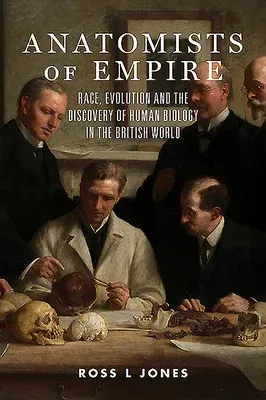Ross L Jones
(Author)Anatomists of Empire: Race, Evolution and the Discovery of Human Biology in the British WorldPaperback, 20 April 2021

Qty
1
Turbo
Ships in 2 - 3 days
Only 3 left
Free Delivery
Cash on Delivery
15 Days
Free Returns
Secure Checkout

Print Length
320 pages
Language
English
Publisher
Arden
Date Published
20 Apr 2021
ISBN-10
1925984702
ISBN-13
9781925984705
Description
Product Details
Author:
Book Format:
Paperback
Country of Origin:
US
Date Published:
20 April 2021
Dimensions:
22.61 x
15.24 x
2.29 cm
Genre:
British
ISBN-10:
1925984702
ISBN-13:
9781925984705
Language:
English
Pages:
320
Publisher:
Weight:
476.27 gm